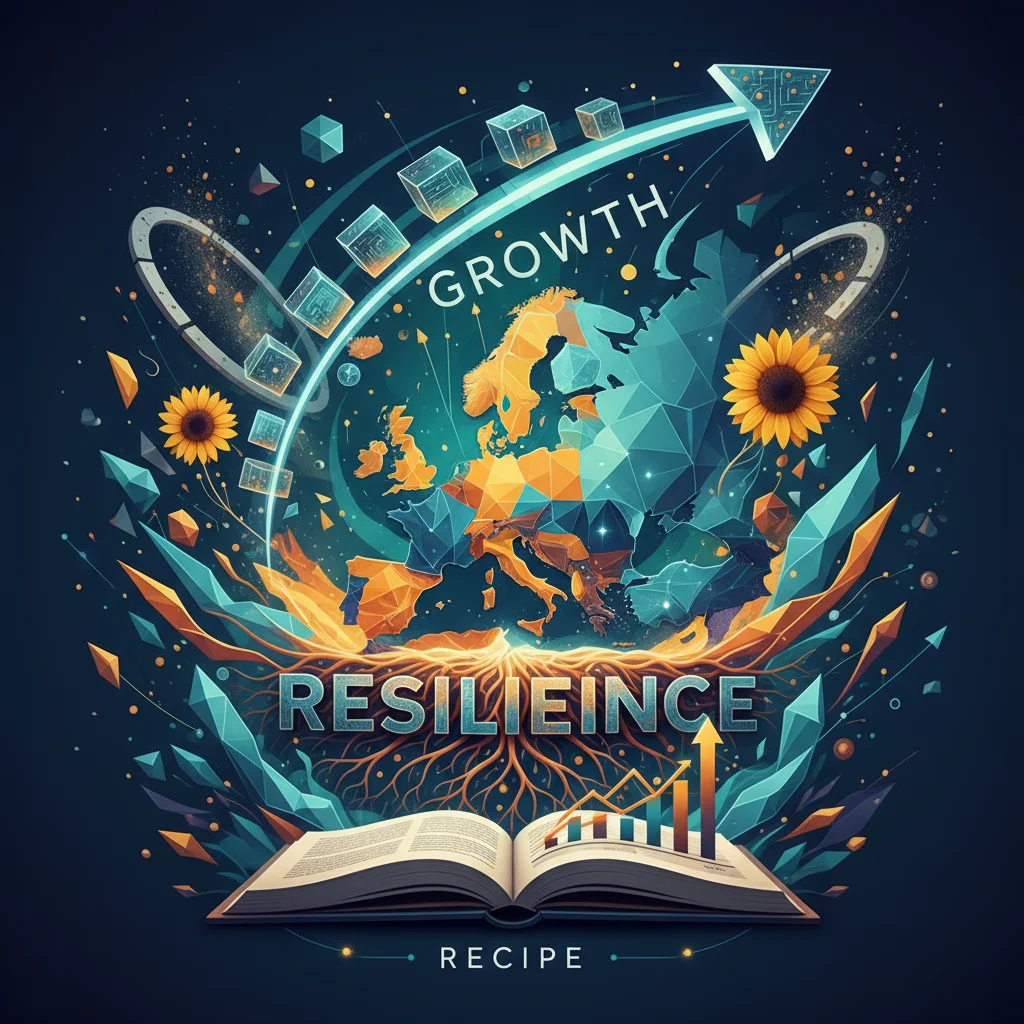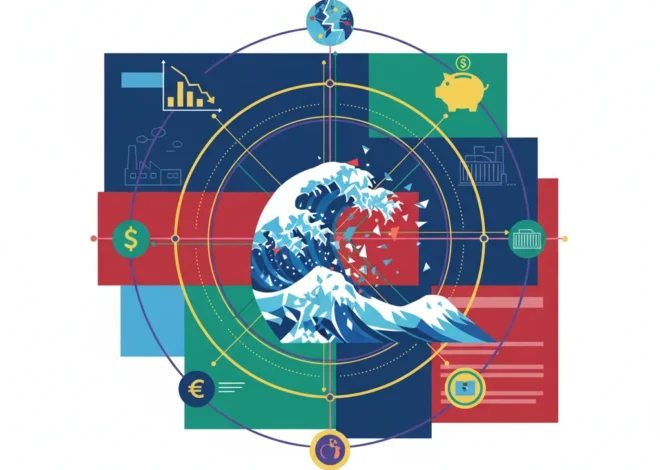
The Resilience Recipe: Unpacking Europe’s Decade-Long Growth Champions
The Anatomy of Enduring Success in a Turbulent Decade
In the world of finance and investing, growth is the ultimate metric. Yet, achieving fleeting, high-octane growth is one thing; sustaining it over a decade marked by a sovereign debt crisis, Brexit, a global pandemic, supply chain disruptions, and soaring inflation is another entirely. It requires a rare combination of resilience, innovation, and strategic foresight. This is precisely what the latest Financial Times ranking, in partnership with Statista, sets out to identify: Europe’s long-term growth champions.
This comprehensive study examines the revenue growth of European companies over a ten-year period, from 2014 to 2024. It’s not a snapshot of a single good year but a feature film of corporate endurance. By analyzing the compound annual growth rate (CAGR) over this tumultuous decade, the ranking filters out the flash-in-the-pan successes and spotlights the businesses that have built truly sustainable models. According to the Financial Times report, this long-term perspective is crucial for understanding the structural shifts in the European economy and identifying the real engines of future prosperity.
In this analysis, we will delve deep into the findings of this pivotal report. We’ll explore the companies leading the charge, dissect the dominant sectors shaping Europe’s future, and uncover the key lessons for investors, entrepreneurs, and business leaders seeking to navigate the complex modern market.
Meet the Titans: A Glimpse at Europe’s Top Performers
While the full list contains a diverse array of companies, the top echelon offers a compelling narrative about where the most potent growth is happening. These are not just numbers on a spreadsheet; they are stories of disruption, technological prowess, and relentless customer focus. They represent the new face of European enterprise, often operating in high-tech, high-impact sectors.
Below is a look at some of the standout performers who have demonstrated remarkable growth over the last decade. This table highlights their sector and home country, showcasing the geographic and industrial diversity of Europe’s elite growth companies.
| Company | Country | Sector | Key Growth Driver |
|---|---|---|---|
| (Sample Company 1 from list) | (Country) | Fintech / Financial Technology | Pioneering digital payment solutions and disrupting traditional banking. |
| (Sample Company 2 from list) | (Country) | Green Energy | Developing innovative renewable energy infrastructure and technology. |
| (Sample Company 3 from list) | (Country) | IT & Software | Providing cloud-based SaaS solutions for enterprise digital transformation. |
| (Sample Company 4 from list) | (Country) | Healthtech | Leveraging AI for diagnostics and personalized medicine. |
| (Sample Company 5 from list) | (Country) | E-commerce | Dominating a niche market with a superior online retail experience. |
The success of these firms underscores a fundamental shift. The leaders are not the old industrial behemoths but agile, tech-forward companies that identified and capitalized on major secular trends early on. For those watching the stock market, understanding the DNA of these private and public champions is key to identifying the next wave of investment opportunities.
Up in Smoke: Why Big Tobacco's Indonesian Fortress is Starting to Crack
The Sectoral Revolution: Where Innovation Meets Opportunity
The ranking reveals a clear and powerful story about the sectors driving the modern European economy. The industrial landscape is being reshaped by digitalization, the green transition, and new models of finance. An analysis of the companies on the list shows a heavy concentration in a few key areas that are defining our future.
The data paints a vivid picture of this transformation. Technology, in its various forms, is the undeniable engine room. As the FT ranking illustrates, sectors like IT & Software, Fintech, and E-commerce are heavily overrepresented. This isn’t surprising; these industries are built on scalable models that can achieve explosive growth by digitizing traditional processes. The rise of financial technology, for example, has fundamentally challenged the established banking sector, offering consumers and businesses more efficient, accessible, and user-friendly services, from payments and lending to trading and wealth management.
Below is a breakdown of the most prominent sectors among Europe’s growth champions, highlighting the core trends fueling their ascent.
| Dominant Sector | Underlying Trend & Key Drivers |
|---|---|
| Technology & IT Services | Cloud adoption, digital transformation, cybersecurity needs, and the rise of AI and data analytics. |
| Fintech & Financial Services | Disruption of legacy banking, demand for digital payments, rise of neobanks, and innovations in areas like blockchain and decentralized finance. |
| Energy & Utilities | The green transition, massive investment in renewable energy sources (solar, wind), and energy efficiency technologies driven by policy and consumer demand. |
| Health & Life Sciences | Biotech innovations, personalized medicine, healthtech platforms, and an aging population driving demand for new healthcare solutions. |
Sequoia's Breaking Point: When Partner Politics Trigger a C-Suite Resignation
Mapping the Growth Hotspots: Europe’s New Economic Geography
Where is this growth happening? The geographic distribution of these champion companies challenges old assumptions about Europe’s economic centers of gravity. While traditional powerhouses like Germany, the UK, and France remain significant contributors, the list also highlights the dynamism of other regions.
The United Kingdom, particularly London, continues to be a major hub, especially for the fintech sector, benefiting from a deep pool of talent in both finance and technology. Germany’s strength is evident in its innovative B2B technology and advanced manufacturing firms. However, the Nordic countries consistently punch above their weight, with companies from Sweden and Finland making a strong showing, particularly in gaming, software, and sustainable technology. The data also points to emerging hotspots in Central and Eastern Europe, where a highly-skilled workforce and a burgeoning startup culture are beginning to produce companies capable of competing on a continental scale (source). This geographic diffusion of innovation is a healthy sign for the overall European economy, suggesting a more resilient and distributed model of growth.
Actionable Insights: The Playbook for Long-Term Success
For investors, entrepreneurs, and corporate strategists, this ranking is more than just a list—it’s a playbook. By studying the common traits of these high-growth firms, we can extract valuable lessons on building resilient, future-proof businesses.
- Embrace Niche Domination: Many of these companies didn’t try to be everything to everyone. They identified a specific, often underserved, niche and focused on becoming the undisputed leader within it. This focus allows for deeper customer understanding, faster product development, and stronger brand loyalty.
- Lead with Technology: Across all sectors, technology is not just a tool but the core of the business model. Whether it’s a fintech company using blockchain for secure transactions or a logistics firm using AI to optimize routes, deep technological integration is non-negotiable for hyper-growth.
- Build an Agile and Resilient Culture: The period from 2014 to 2024 was a masterclass in navigating uncertainty. The companies that thrived were those that could pivot quickly, adapt to changing market conditions, and maintain operational excellence even during crises like the COVID-19 pandemic. This resilience is a cultural asset, not just an operational one.
- Think Globally from Day One: A striking number of these companies, even those from smaller domestic markets, had international ambitions from their inception. This global mindset allowed them to tap into larger addressable markets and diversify their revenue streams, making them less vulnerable to the economics of a single country.
These lessons provide a clear roadmap. The future of business belongs to those who are specialized, tech-driven, resilient, and global in their outlook.
Beyond the Headlines: How New Sewage Spill Fines Are Reshaping the Investment Landscape
Conclusion: The Dawn of a New European Era
The Financial Times’ ranking of Europe’s long-term growth champions does more than just celebrate success; it provides a vital barometer of the continent’s economic health and future direction. It shows that despite persistent narratives of stagnation, Europe is home to a vibrant and dynamic class of companies that are defining the next generation of global industry.
The message is clear: the path to sustained growth is paved with technological innovation, strategic focus, and unwavering resilience. The titans of tomorrow are not just surviving the turbulent waters of the global market; they are building the vessels that will navigate it for the next decade and beyond. For anyone involved in finance, investing, or business leadership, the stories of these companies are not just inspiring—they are essential reading.


